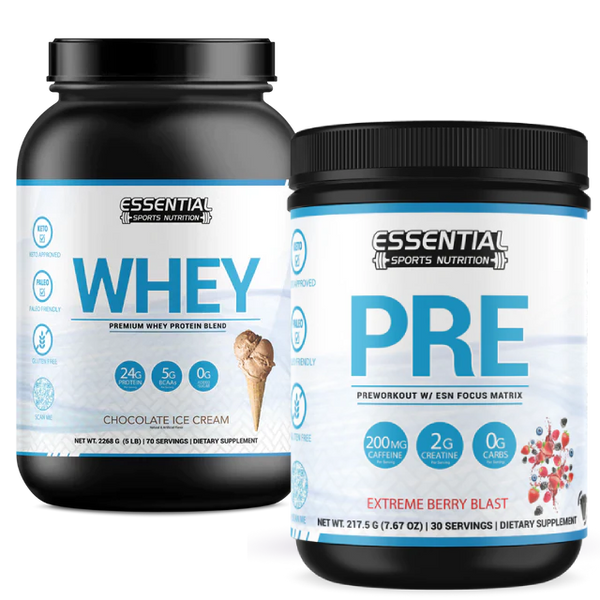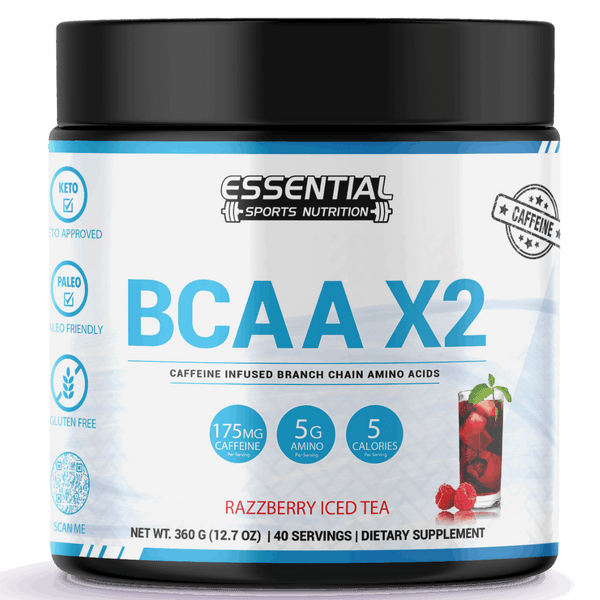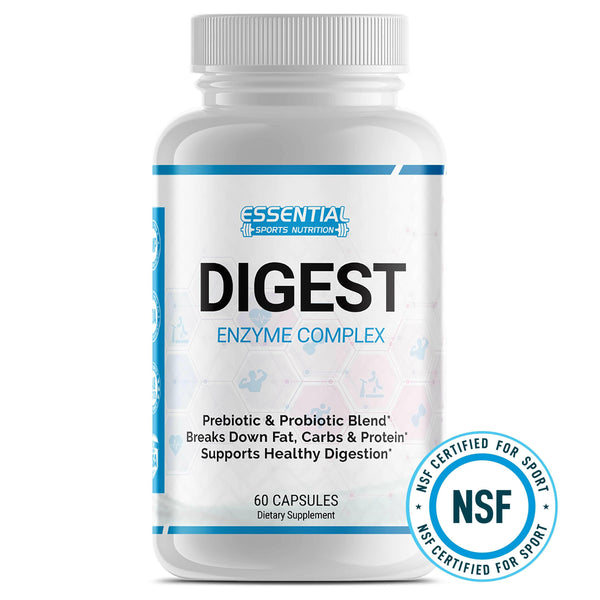Leg Extension Exercises: Proper Form, Muscles Worked, and Quad Activation
Nail your leg extensions, guarantee proper knee alignment, keep your back supported, engage your core, and extend the legs smoothly. This exercise targets and isolates your quadriceps, aiding in strength, muscle definition, and lower body performance. Avoid mistakes like using excessive weight or swinging the weight. Prioritize safety by avoiding heavy lifting, maintaining form, and stopping if you feel any knee or ankle pain. Explore variations like standing or bodyweight leg extensions to diversify your workout. Mastering leg extensions helps prevent injuries and boosts athletic performance. Maximize your leg extension benefits with proper form and controlled movements.

Key Takeaways
- Proper form includes knee alignment, back support, and core engagement for effective leg extensions.
- Benefits encompass quadriceps isolation, muscle strengthening, weight loss support, and enhanced lower body performance.
- Muscle isolation aids in defining quadriceps, correcting imbalances, and improving lower body function.
- Quadriceps strength improvement targets specific muscles, enhances power and stability, aids in recovery, and promotes balanced development.
- Different variations like standing, banded, bodyweight and seated leg extensions offer versatility in workouts.
Proper Technique and Form for Leg Extensions
When conducting leg extensions, maintain proper form by adjusting the machine to align your knees with its joint. This alignment is essential to guarantee that the exercise targets the quadriceps effectively while minimizing strain on the knee joints. Keeping your back pressed against the backrest is vital for stability and to prevent arching, which could lead to back discomfort. Engage your core muscles throughout the exercise to support your lower back and maintain proper alignment.
To execute the leg exercise correctly, extend your legs slowly while avoiding locking out the knees to prevent hyperextension. You can fully engage and strengthen your quadriceps muscles by controlling the motion and focusing on a full range of motion. Remember to breathe steadily and avoid jerky movements to reduce the risk of injury. Proper form not only enhances the effectiveness of the leg extension but also helps in safely developing muscle balance and strength.
Benefits of Leg Extensions
When you perform leg extensions, you benefit from isolating and effectively targeting your quadriceps muscles, leading to improved strength and muscle development in that area. This exercise also aids in knee rehabilitation by strengthening the surrounding muscles, contributing to a faster and more effective recovery process. Additionally, leg extensions support weight loss efforts as they engage multiple muscle groups, increasing calorie expenditure during your workout sessions.
Muscle Isolation Benefits
Isolating the quadriceps through leg extensions provides numerous benefits for enhancing muscle definition, strength, and overall lower body performance. Leg extensions effectively target and isolate the quadriceps, improving muscle definition and strength in the front of the thighs. By focusing solely on the quads, this exercise helps correct muscle imbalances and enhances overall lower body function. The controlled movement of leg extensions allows for precise quadriceps engagement without interference from other muscle groups, promoting targeted development. Incorporating leg extensions into your workout routine can result in better knee stability, enhanced athletic performance, and aesthetic leg improvements. Embrace the isolation benefits of leg extensions to sculpt and strengthen your quadriceps effectively.
Quadriceps Strength Improvement
Enhance your quadriceps strength effectively by incorporating leg extensions into your workout routine. Leg extensions specifically target the quadriceps muscles, including the rectus femoris, vastus lateralis, vastus medialis, and vastus intermedius, leading to significant strength improvement. Strengthening these muscles enhances lower body power and stability and boosts athletic performance. Additionally, leg extensions play an important role in knee rehabilitation and recovery by isolating and strengthening the muscles around the knee joint. Engaging in leg extensions can also aid in weight loss and calorie burning as they target large muscle groups in the legs. By focusing on quad isolation, these exercises help you achieve balanced leg development and muscle definition.
| Quadriceps Strength Improvement | |
|---|---|
| Target Muscles | Rectus Femoris, Vastus Lateralis, Vastus Medialis, Vastus Intermedius |
| Benefits | Enhances lower body power and stability, improves athletic performance |
| Rehabilitation | Aids in knee recovery and strengthening surrounding muscles |
| Weight Loss | Contributes to burning calories by engaging large leg muscle groups |
| Muscle Definition | Helps achieve balanced leg development and muscle definition |
Common Mistakes to Avoid in Leg Extensions
To guarantee proper execution and maximize the benefits of leg extensions, it is important to avoid common mistakes that can hinder your progress and increase the risk of injury. Adding excessive weight to leg extensions can raise the likelihood of injury and reduce the exercise's effectiveness. Neglecting to engage your core during leg extensions may cause discomfort and take the focus away from your quadriceps, diminishing the desired outcomes. Ensuring a full range of motion in leg extensions is essential to optimize the exercise's effectiveness. Avoid swinging the weight or using momentum when performing leg extensions, as this can compromise your form and limit muscle engagement. Lastly, avoid locking your knees at the top of the movement to prevent straining the knee joint and potential injuries. By removing these common mistakes, you can enhance your leg extension routine and minimize the risk of setbacks.
Safety and Precautions for Leg Extensions
For a safe and effective leg extension workout, it is vital to prioritize proper form and adhere to recommended precautions to prevent injury and optimize muscle engagement. When performing leg extensions, it is essential to avoid heavy lifting to prevent strain on knee ligaments and potential injuries. Maintaining proper form is key; rushing through the exercise can lead to the use of momentum rather than engaging the muscles effectively. If you experience any knee or ankle pain during the exercise, it is important to stop immediately to prevent exacerbating existing issues. Seeking guidance in case of injuries and ensuring proper form while performing leg extensions can help prevent strain or injury.
To reduce the risk of overuse injuries and promote balanced muscle development, it is advisable to mix up quadriceps workouts with different exercises. By incorporating variety into your routine and listening to your body's signals, you can enhance the safety and effectiveness of your leg extension workouts.
Different Variations of Leg Extensions
Different variations of leg extensions offer a range of options to target and strengthen your quadriceps, catering to diverse preferences and fitness levels. Standing Leg Extensions focus on unilateral quad activation, enhancing balanced strength and stability. Banded Leg Extensions provide portable resistance, ideal for home or travel workouts, adding challenge to your leg extension routine. Bodyweight Leg Extensions engage your quads effectively without the need for equipment, promoting muscle endurance and functional strength. Seated Leg Extensions on machines offer controlled resistance, facilitating muscle hypertrophy and providing a safe environment to push your quad muscles to fatigue. These variations cater to different fitness levels and goals, allowing you to customize your leg extension workout to suit your needs. Experiment with these diverse options to find the variation that best complements your training regimen and helps you achieve your quadriceps strengthening objectives.
Muscles Targeted in Leg Extensions
When performing leg extensions, you target the quadriceps muscles, which include various muscle groups responsible for knee extension and lower body movements. Strengthening these muscles through leg extensions enhances knee stability, function, and overall lower body strength. Engaging the quadriceps effectively promotes muscle development and supports functional performance in various physical activities.
Targeted Leg Muscles
Targeting the quadriceps muscles, leg extensions engage key muscle groups essential for lower body strength and stability. The quadriceps consist of four main muscles - the rectus femoris, vastus lateralis, vastus medialis, and vastus intermedius - which are crucial for knee extension and hip flexion. By activating and strengthening the patellar ligament and knee attachments, leg extensions contribute to overall lower body strength and stability. Developing strong quadriceps through this exercise can lead to enhanced athletic performance, increased power output, and improved coordination. Additionally, incorporating leg extensions into your workout routine can help prevent injuries by strengthening the thigh muscles and supporting ligaments. Focus on these targeted leg muscles to build a solid foundation for your lower body strength and functionality.
Importance of Strengthening
To enhance your lower body strength and stability effectively, prioritizing the strengthening of the quadriceps muscles through leg extensions is crucial. The quadriceps consist of the rectus femoris, vastus lateralis, vastus medialis, and vastus intermedius, all targeted during leg extensions. These muscles are essential for functions like knee extension and hip flexion, which are crucial for daily movements and athletic performance. By strengthening the quadriceps through leg extensions, you can increase power output, improve coordination, and reduce the risk of injuries. This exercise isolates the quadriceps, aiding in the development of strong and defined leg muscles. Additionally, building strong quadriceps can enhance overall lower body balance and stability.
Step-by-Step Guide for Leg Extensions
Position yourself on the leg extension machine with your knees aligned with the machine's joint, ensuring ideal alignment for the exercise. Engage your core muscles and keep your back against the backrest throughout the movement to maintain stability and prevent straining your lower back.
As you begin the exercise, extend your legs slowly and in a controlled manner. Focus on almost straightening your legs without locking your knees at the top of the movement. Lower the weight back down with the same control to effectively complete the full range of motion.
Aim to perform leg extensions in sets of 8-12 repetitions for best results. This rep range efficiently targets and strengthens your quadriceps. Remember to adjust the weight according to your fitness level and goals to challenge yourself without compromising form. By following these steps with precision, you can maximize the benefits of leg extensions in your workout routine.
Maximizing Benefits of Leg Extensions
To maximize the benefits of leg extensions, ensure proper alignment and fully engage your quadriceps throughout the movement for peak muscle activation and growth. Confirm that your knees align with the machine's pivot point, maintaining a steady pace and avoiding swinging motions. Focus on squeezing your quads at the top of the movement to enhance muscle contraction. Controlling the weight both on the way up and down maximizes the time under tension, contributing to muscle development.
Adjust the weight to a challenging yet manageable level, aiming for 4 sets of 12-15 repetitions. Use the Rate of Perceived Exertion (RPE) scale to gauge intensity and make necessary adjustments. Consistency is key; include leg extensions regularly in your workout routine to promote muscle hypertrophy effectively.
Incorporating Leg Extensions Into Workouts
When incorporating leg extensions into your workouts, focus on maintaining proper form and controlled movements to target and strengthen your quadriceps effectively. To make the most out of your leg extension exercises, consider the following:
- Begin with a proper warm-up routine to prepare your muscles for the workout.
- Adjust the seat and footpad settings on the leg extension machine to guarantee proper alignment and comfort.
- Contract your quadriceps at the top of the movement and slowly lower the weight back down to the starting position to engage the muscles fully.
Alternatives to Leg Extensions
For a well-rounded quad workout, exploring various exercises beyond leg extensions can enhance muscle development and strength in your lower body. When looking for alternatives to leg extensions, consider the following options:
- Sissy Squats: This exercise targets the quads effectively by isolating them during the movement, helping to build strength and muscle mass.
- Reverse Nordic Curls: A challenging bodyweight exercise that engages the quads and hamstrings, providing a unique way to work the front of your legs.
- Classic Quadriceps Exercises: Including squats, leg presses, and hack squats in your routine can also effectively target the quads while engaging other lower body muscles for a thorough workout.
Incorporating these alternatives to leg extensions into your training regimen can provide variety, challenge your muscles in different ways, and contribute to overall lower body strength and development. Experimenting with a mix of exercises tailored to your preferences can lead to well-rounded quad development and increased muscle adaptation.
Conclusion

To sum up, always remember to focus on proper form and technique when performing leg extensions to prevent injury and maximize the benefits for your leg muscles. Visualize your legs getting stronger with each rep, like a well-oiled machine working at its best. Incorporate variations and alternatives into your workout routine to keep challenging yourself and see even greater results. Stay dedicated and consistent, and you'll soon see your leg strength and muscle tone improvements. Keep pushing yourself to reach new heights!
Muscles Worked and Benefits of the Leg Extension Variations FAQs
Q: What are leg extension exercises, and why are they beneficial?
A: The function of leg extensions targets and strengthens your quadriceps. This exercise isolates your quads for improved muscle development and knee extension vital for lower body movements. Strengthening these muscles enhances knee stability and performance in various activities.
Q: What muscles are worked during leg extensions?
A: Leg extensions primarily target the quadriceps muscles, including the vastus lateralis, vastus medialis, and vastus intermedius.
Q: What are some common mistakes to avoid when performing leg extensions?
A: Common mistakes to avoid during leg extensions include using too much weight, swinging the body, and not maintaining proper form throughout the exercise.
Q: How can proper form be maintained during leg extensions?
A: To maintain proper form during leg extensions, ensure your back is flat against the seat, your knees are aligned with the machine's axis, and your movements are controlled throughout the exercise.
Q: What variations of leg extensions can be incorporated into a workout routine?
A: Variations of leg extensions include single-leg extensions, bodyweight leg extensions, standing leg extensions, and using resistance bands for added intensity.
Q: How can leg extensions help build muscle and improve leg strength?
A: Leg extensions can aid in muscle hypertrophy of the quadriceps, increasing leg strength, and enhancing overall lower body performance.
Q: What Is the Proper Form for Leg Extensions?
A: To perform leg extensions correctly, align your knees with the machine's joint, keep your back against the backrest, engage your core, exhale while extending without locking your knees, and lower the weight slowly.
Q: What Are the Health Benefits of Leg Extension?
A: Regarding the health benefits of leg extensions, they play an essential role in strengthening your quadriceps, aiding in knee stability, supporting weight loss, and providing balanced lower body development. Incorporate them for overall leg strength.
Q: What Is the Correct Posture for Leg Extensions?
A: Maintain a flat back, keep feet flat and knees aligned, engage the core, avoid locking knees, and focus on a controlled motion to maximize muscle engagement and reduce injury risk. Following these guidelines guarantees correct posture during leg extensions.




























